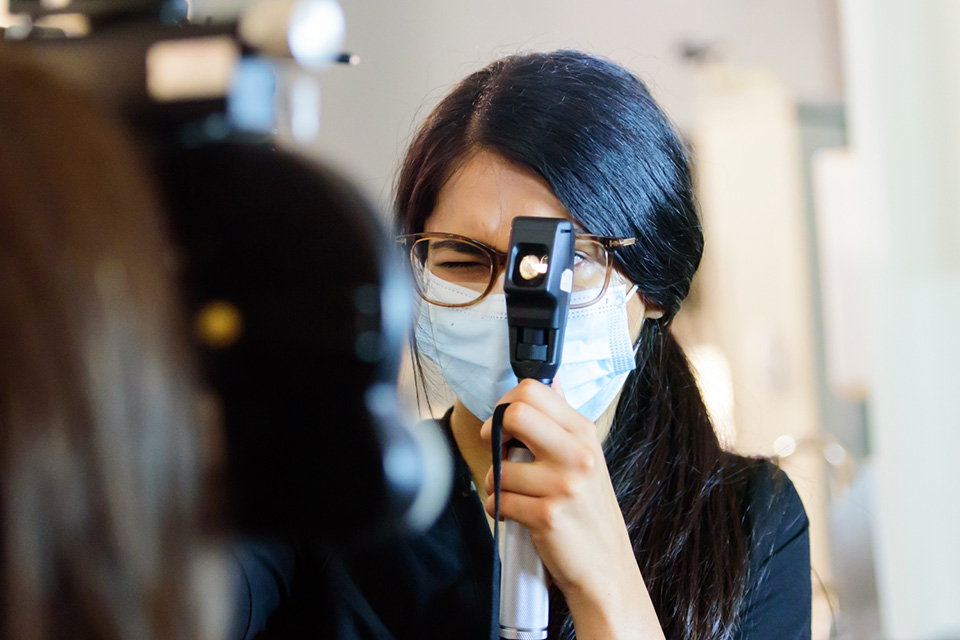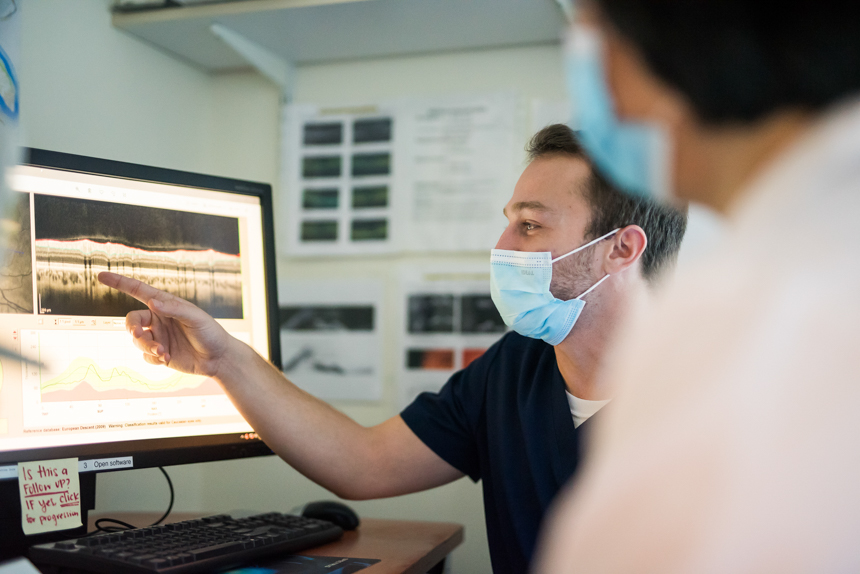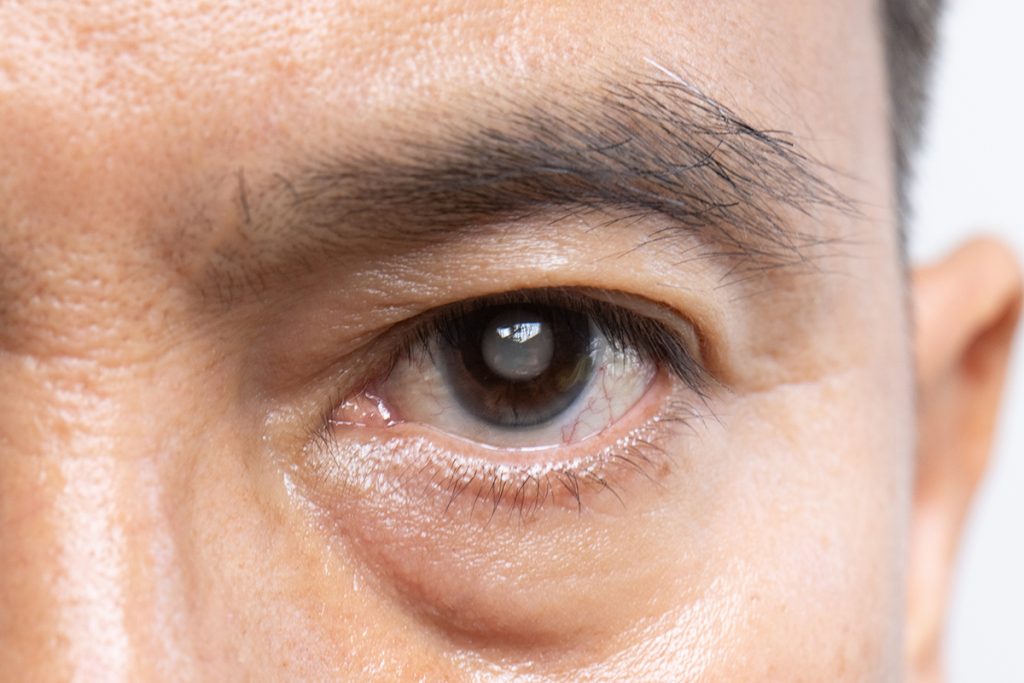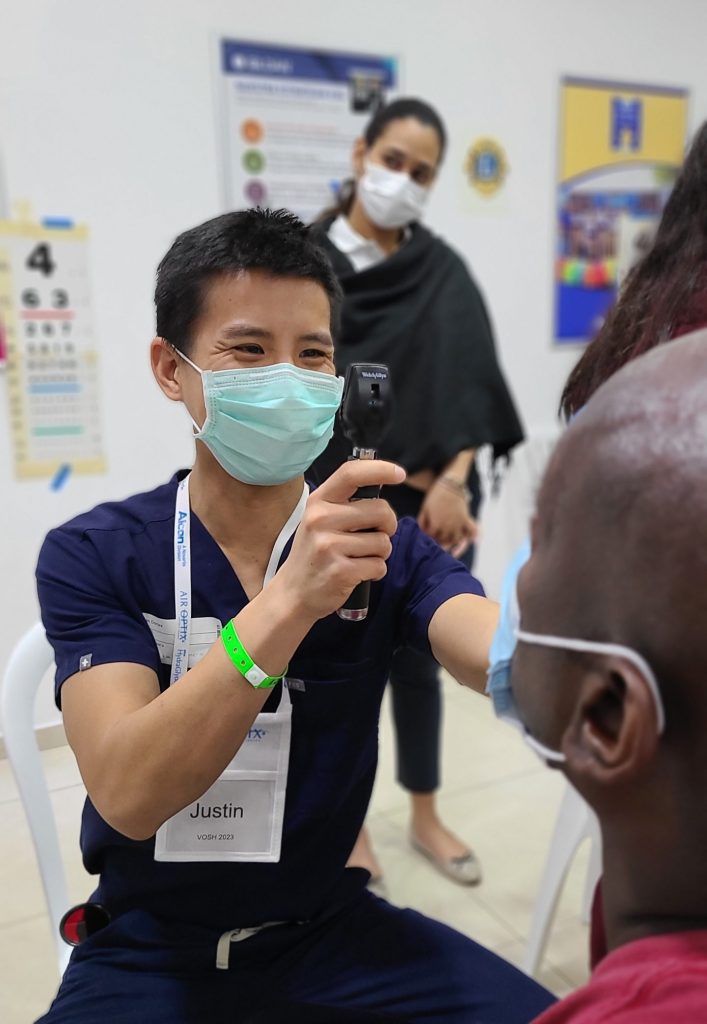What are Cataracts and What to do About Them

June is Cataract Awareness Month, a time when older adults are advised to pause and learn more about a common degenerative eye condition that typically appears in individuals starting around age 60, when proteins in the lens of the eye begin to break down resulting in a hazy appearance over time. Cataracts affect about 70% of adults by age 75, and recent data indicate more than 17% of adults above the age of 40 have at least an early form of cataract in one or both eyes. (UNC School of Medicine)
What is a Cataract?
A cataract is a clouding of the eye’s lens, which blocks or changes the passage of light into the eye. The lens of the eye is located behind the pupil and the colored iris and is normally transparent. The lens helps to focus images onto the retina – the lining of the inside of the eye where photoreceptors transmit images to the brain. Your vision may become blurry or dim because the cataract limits light from properly passing through to your retina.
According to Thomas Andrea, OD, FAAO, Assistant Professor of Clinical Optometry, “The biggest sign most patients will notice as their cataracts begin to develop is difficulty with night time driving, reading in low light conditions such as restaurants, and haloes around lights. As the cataracts continue to develop there may come a time where this can limit patients from feeling they are able to drive safely, or read even with glasses, and that is when we will have a discussion about surgical options.”

How Common are Cataracts?
Cataracts are a leading cause of preventable blindness among older adults in the United States. More than half of all Americans have cataracts by the time they are 80 years old. Cataracts can also sometimes be found in young people or even newborn babies.
Why do Cataracts Cause Vision Loss?
Your eye works like a camera. A camera needs a lens to focus an image. But when the lens is dirty or cloudy, the camera can’t take a good, clear picture. It’s the same with your eyes. Your lens focuses rays of light on the nerve tissue at the back of your eye (the retina). The retina then transmits the image it receives to your brain. But when a cataract clouds your eye’s lens, light rays don’t pass through as well and the retina cannot transmit a good picture.
Am I at Risk for Developing Cataracts?
The exact cause of a cataract is unknown. Most often, a cataract is part of getting older. As you age, you are at greater risk of developing a cataract. There are also several possible risk factors for cataracts, such as:
- Intense heat or long-term exposure to UV rays from the sun
- Certain diseases, such as diabetes
- Inflammation in the eye
- Hereditary influences
- Events before birth, such as German measles in the mother
- Long-term steroid use
- Eye injuries
- Eye diseases
- Smoking
What are the symptoms of a cataract?
Generally, a cataract does not cause pain, redness, or tears. When cataracts do start to affect the vision, it tends to be a constant effect, not one that comes and goes. The following problems may indicate that you have a cataract:
- You have blurred vision, double vision, ghost images, or the sense of a “film” over your eyes.
- Lights seem too dim for reading or close-up work, or you are “dazzled” by strong light.
- You change eyeglass prescriptions often and the change does not seem to help your vision.
- You may also be able to see the cataract in your eye. It may look like a milky or yellowish spot in your pupil.
Why do Cataracts Form?
Cataracts are probably caused by changes related to aging. Throughout our lives, our bodies replace old cells with new ones. As we grow older, the old cells in our eye’s lens build up and block light as it tries to pass through. The end result is cloudy vision.
What are the types of cataracts?
Cataracts usually form in both eyes, but not always at the same rate. They can develop slowly or quickly, or progress to a certain point, then not get any worse. As a result, you may not notice large changes in your sight right away.
- Age-related – 95% of cataracts are age-related, usually beginning to show signs between ages 40-65.
- Congenital – These are present at birth, usually caused by infection or inflammation during pregnancy; possibly inherited.
- Traumatic – Lens damage from a hard blow, cut, puncture, intense heat or chemical burn may cause cataracts.
- Secondary – Some medicines, eye disease, eye infection, or diseases such as diabetes cause these cataracts.
How will my eye doctor check for cataracts?
Everyone who gets a cataract experiences it differently. But a person with a cataract commonly experiences cloudy or blurry vision. Lights may cause a glare, seem too dim or seem too bright. It may be hard to read or drive, especially at night. If you have a cataract, you may see halos around lights, such as car headlights, that make it hard to focus clearly. Colors may not seem as bright as they used to be. Or you may have to change your eyeglass prescription often.
To find out if you have cataracts, your eye doctor will want to:
- find out your general medical history
- find out your specific eye history, including problems and symptoms
- test your vision (visual acuity)
- test your side vision (peripheral vision)
- test your eye movement
- test you for glaucoma (by measuring the eye’s internal pressure)
- do a microscopic exam of the front of the eye (using something called a slit lamp) to assess the density of the cataract and how it interferes with light passing through the lens
- dilate the pupils of your eyes with drops to examine the retina, the optic nerve (which carries visual messages from the retina to the brain) and the macula (responsible for the best part of central vision)
- test you to see how glare affects your vision
After this exam, your eye doctor will determine whether you have cataracts, how much they interfere with your vision, whether surgery would help, and what types of treatment and lens replacements are best for you.

To make an appointment at NECO’s Center for Eye Care at 930 Commonwealth Avenue in Boston, please call (617) 396-8531, or email [email protected]. To make an appointment at NECO’s Roslindale Office at 4199 Washington Street, please call (617) 323-7300 or email [email protected].
This information courtesy of www.preventblindness.org

